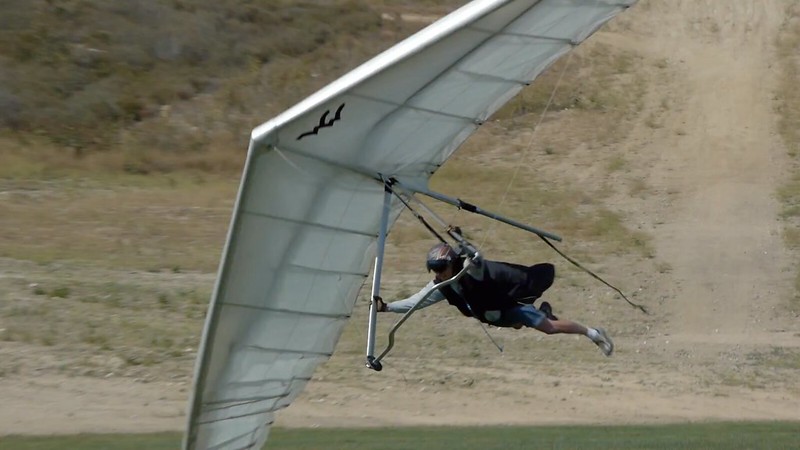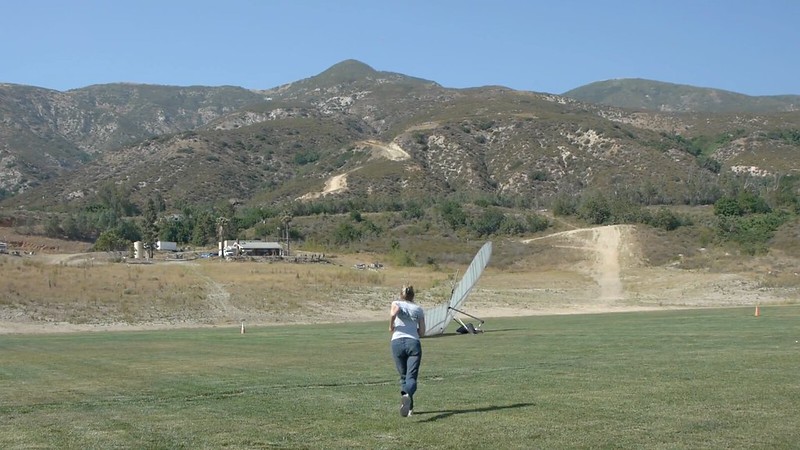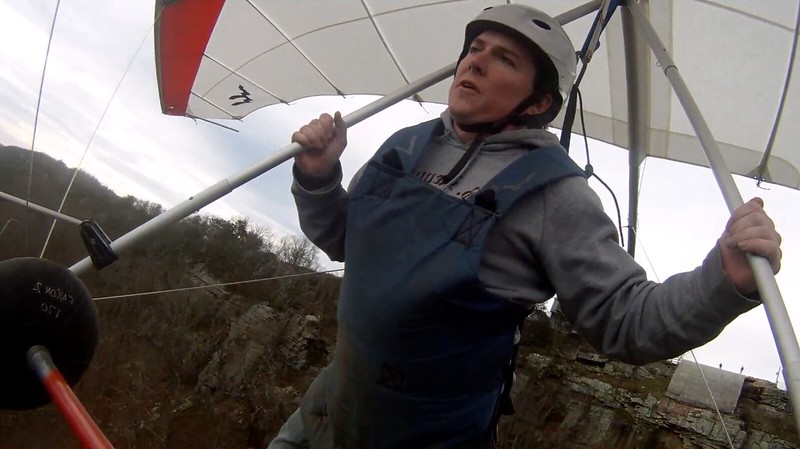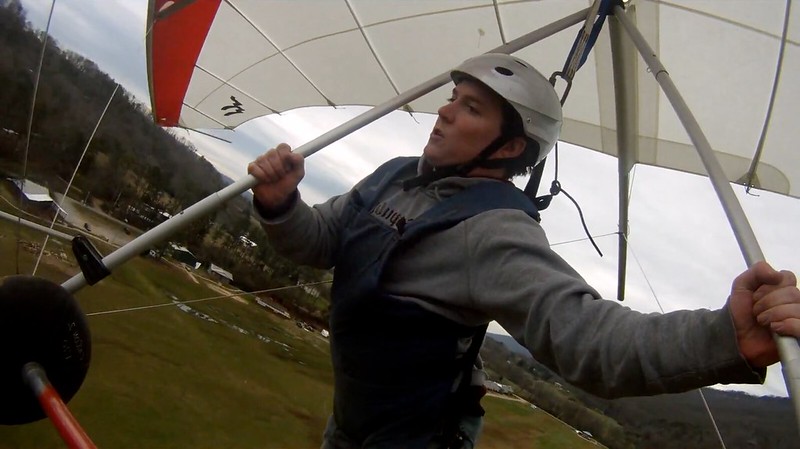Sport 2 VG lessons learned IMHO!
I stopped watching the video after he launched without doing a hook-in check. I figured he was dead at that point. What happened?Paul Walsh - 2012/08/06 11:59:07 UTC
UK
hear hear....
I totally agree that it MUST be a conscious decision. If you are not aware you are doing it, and transitioning too soon, I agree it WILL get you eventually.
OK, if you have five hundred hours on the same harness/glider setup, and you are routinely transitioning after two seconds of getting airborne then fine. But until then, learn from the post flight viewing of the video. Unless you already know everything. In which case good luck.
Hey CAL, how 'bout getting your goddam shift key fixed. I'm tired of editing your posts to make them look like they were written by someone who made it through the second grade.CAL - 2012/08/06 12:31:00 UTC
Ogden
i think this is sound advice, keep your engines running, don't get in the habit of thinking you have ran enough, you could settle down and may need to run a bit more, happened to me at my Willard site, i launched in front of thermal cycle and settled good thing it was a steep launch, i got away with 2 mistakes, not waiting for a good cycle and getting prone to early Michael170 please tell me why you feel contrary ?
Hey Matt, why don't you come over here? I'll substantiate the hell out of it.Matt Christensen - 2012/08/06 14:29:52 UTC
Vienna, Virginia
Please substantiate your criticism.
Or...Walt Conklin - 2012/08/06 15:01:20 UTC
Montana
Being stuck on the down tubes too long is not a good thing either, especially when a boomer comes ripping up the slope.
http://www.youtube.com/watch?v=fuMxK9PadzA
08-3717
http://farm6.staticflickr.com/5033/14251899186_beac641259_o.png

17-4117
http://farm4.staticflickr.com/3682/14088396670_62d49cbf36_o.png

23-4810
http://farm3.staticflickr.com/2932/14295179433_313938b3f9_o.png

http://www.youtube.com/watch?v=tkElZMhpmp0
http://www.youtube.com/watch?v=VYe3YmdIQTM
...when there's a field a short distance underneath you.
There's a fine line in transition and it would also depend on where you are flying and what you are comfortable with.
Sounds like a pretty good argument for transitioning at the first moment one CAN safely do it so if/when the shit hits the fan you're most safely configured to deal with it.Christopher LeFay - 2012/08/06 15:17:46 UTC
Q: When would a pilot be "stuck" on the down tubes?
A: When the pilot can't transition safely.
I dunno, Christopher. How many people have rolled or been rolled back into the slope with their hands on the downtubes?How many accidents may be attributed to waiting to transition until away from launch?
This:
http://www.youtube.com/watch?v=zfHF0lRvm0M
is arguably a reasonably good example from the scooter tow environment.
None that I know of and you haven't cited anything.How many accidents may be attributed to transitioning during launch?
So many, in fact, that you're too overwhelmed to be able to give us an example.There's no comparison - transitioning early is by many factors a greater contributor to failure. Based on what? Empirical sampling of launch catastrophes.
Yeah, that's a real advantage...There are all sorts of maneuvers that are advantaged by a particular posture - most rotate upright for flaring...
http://www.hanggliding.org/viewtopic.php?t=22176
Paragliding Collapses
...especially when your chosen LZ is a narrow dry river bed with large rocks strewn all over the place or a field filled with seven foot high corn.Jim Rooney - 2011/06/12 13:57:58 UTC
Most common HG injury... spiral fracture of the humerus.
You mean like when you want and need speed and control?...while you don't find many doing wing overs from the down tubes.
Yeah...Still, if you haven't practiced flying from the down tubes enough to adequately control the glider in strong conditions near launch, transitioning as soon as possible is not the answer.
http://ozreport.com/14.129
Packsaddle accident report
Hang gliding students don't get nearly enough practice flying from the downtubes.Shane Nestle - 2010/06/30 13:01:28 UTC
Being that John was still very new to flying in the prone position, I believe that he was likely not shifting his weight, but simply turning his body in the direction he wanted to turn.
Ya know what I recommend, Christopher? Flying the fucking glider as much as possible in the configuration for which you have maximum control...'Fly with what you are comfortable with' is not a plan for success; I recommend practicing until you are confident in your ability to control the glider from the down tubes.
http://ozreport.com/forum/viewtopic.php?t=27086
Steve Pearson on landings
...and for which it was certified.Steve Pearson - 2012/03/28 23:26:05 UTC
I can't control the glider in strong air with my hands at shoulder or ear height...
Yeah Windlord...Walt Conklin - 2012/08/06 15:54:28 UTC
The five second guideline is spot on as a good rule of thumb.
http://www.questairforce.com/aero.html
Aerotow FAQ
Really hard to go wrong with these rules of thumb people in this sport pull out of their asses.The strength of the weak link is crucial to a safe tow. It should be weak enough so that it will break before the pressure of the towline reaches a level that compromises the handling of the glider but strong enough so that it doesn't break every time you fly into a bit of rough air. A good rule of thumb for the optimum strength is one G, or in other words, equal to the total wing load of the glider.
Mike Bastan - 2012/08/06 16:04:14 UTC
Los Angeles
No word yet from Deeprecon. I'm curious as to whether he agrees with this analysis of his launch transition.
Yeah, Christopher's defined it as a bad habit so now it's a bad habit.Garrett Speeter (AlaskanNewb) - 2012/08/06 16:25:46 UTC
Fairbanks
I am guilty of this!! It is amazing how fast you develop bad habits!
And Malcolm's defined a standard aerotow weak link as a device which, if you fail to maintain the correct tow position (centered, with the wheels of the tug on the horizon), will break before you can get into too much trouble so now it's the focal point of a safe towing system.


 Don't transition if you ain't got control, otherwise transition in the first seconds is fine if you know what you're doing.
Don't transition if you ain't got control, otherwise transition in the first seconds is fine if you know what you're doing.